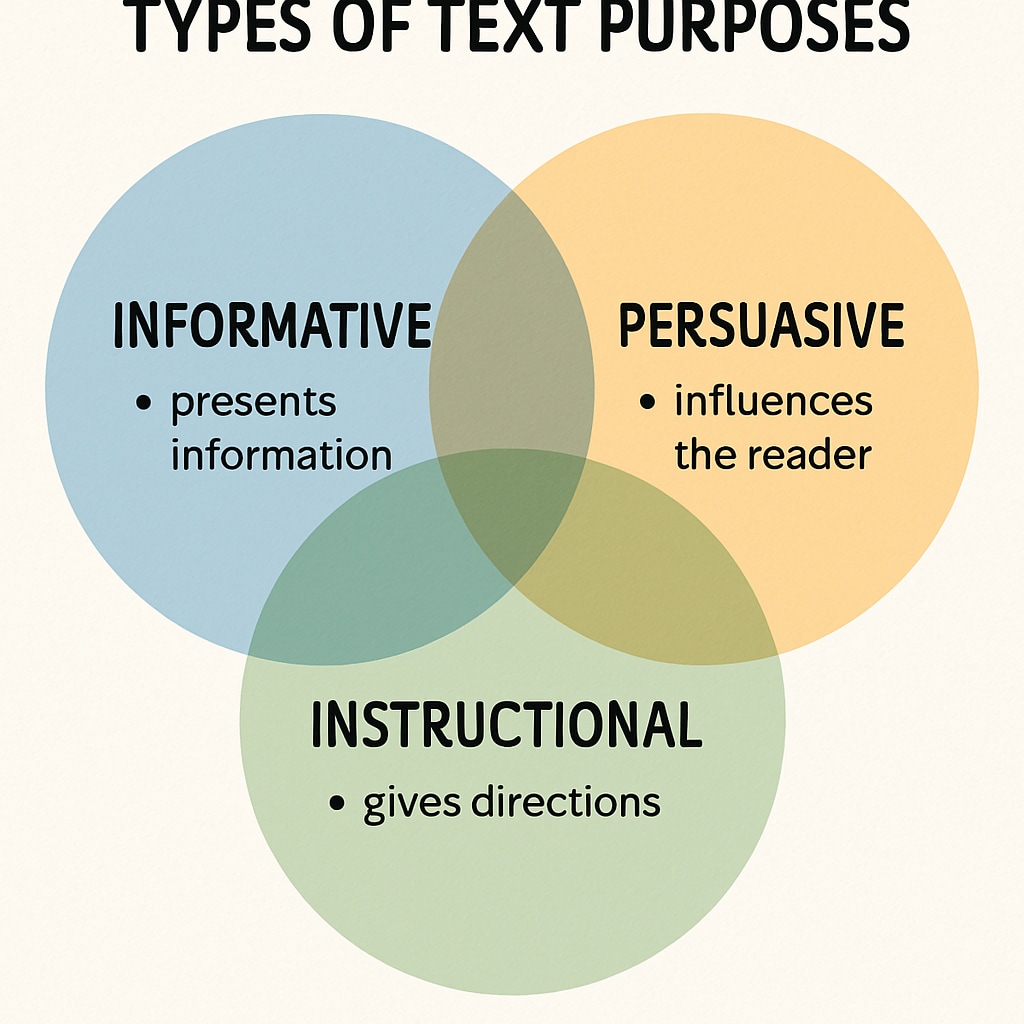Mastering functional English reading is a crucial skill for students, especially when it comes to identifying the purpose of a text. Understanding text purpose not only enhances reading comprehension but also ensures success in functional skills tests. In this article, we’ll explore the three main types of text purposes—informative, persuasive, and instructional—along with practical strategies to identify them quickly and accurately.
Understanding the Three Main Text Purpose Types
Before diving into strategies, it’s essential to understand the three primary text purposes commonly found in functional English reading tests:
- Informative Texts: These texts aim to present facts, data, or explanations. For example, a news article or a science report.
- Persuasive Texts: The goal here is to convince the reader to adopt a particular viewpoint or take specific actions. Examples include advertisements or opinion articles.
- Instructional Texts: These are designed to provide step-by-step guidance or directions, such as recipes or user manuals.
Recognizing these categories is the first step in accurately identifying text purposes.

How to Accurately Identify Text Purpose in Functional English Reading
Identifying text purpose can be straightforward if you know what to look for. Here are some tips to help you:
1. Analyze the Language and Tone
The choice of words and tone can reveal the text’s purpose:
- Informative: Neutral, factual, and objective language.
- Persuasive: Emotional, opinionated, and loaded with rhetorical devices such as rhetorical questions or hyperbole.
- Instructional: Direct and imperative, using verbs like “do,” “add,” or “follow.”
2. Look for Structural Clues
The structure of a text often aligns with its purpose:
- Informative: Organized into sections with headings, subheadings, and data tables.
- Persuasive: May include arguments, counterarguments, and a call to action.
- Instructional: Sequential steps, often numbered or bulleted.
3. Pay Attention to Visual Aids
Charts, graphs, or images can provide hints about the text’s aim. For example:
- A graph in an informative text might display statistical data.
- An image in a persuasive text could evoke emotions to support an argument.
- Diagrams in instructional texts often clarify complex steps.
By combining these strategies, you can develop a systematic approach to identifying any text’s purpose.
Practical Applications in Functional Skills Tests
Functional skills tests often include texts that mimic real-world scenarios. Here’s how you can apply your understanding of text purpose during exams:
- Read the Instructions Carefully: Test questions often hint at the text’s purpose.
- Skim for Key Features: Focus on headings, introductions, and conclusions to grasp the central aim quickly.
- Practice with Sample Tests: Familiarize yourself with different text types through practice papers available online. For example, explore resources like Functional Skills Overview on Britannica.
By honing these skills, students can approach functional English reading tests with confidence and clarity.

Final Thoughts: Mastering Functional English Reading
Identifying text purposes in functional English reading is a key skill that can significantly enhance comprehension and test performance. By understanding the characteristics of informative, persuasive, and instructional texts, and applying the strategies discussed, students can navigate reading challenges with ease. As a result, they’ll not only excel in exams but also develop critical reading skills for real-world applications.
Start practicing today, and unlock the full potential of functional English reading!
Readability guidance: Use short paragraphs and lists to summarize key points. Ensure smooth transitions between sections with words like “for example,” “in addition,” and “therefore.” Keep long sentences and passive voice usage to a minimum for maximum clarity.


